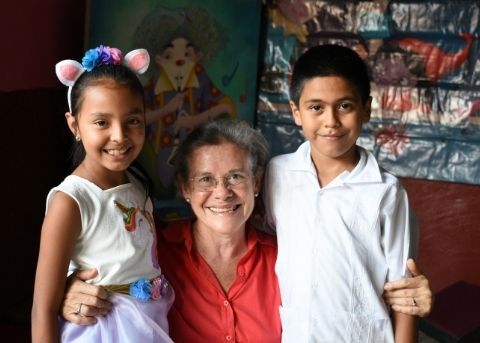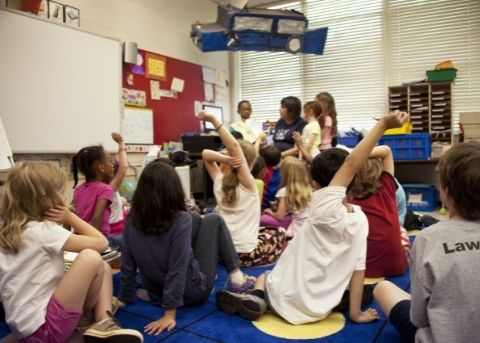Why social-emotional learning belongs in the classroom
 How do you manage all those emotions, relationships and events in your classroom? No matter what age group you teach, students are sure to be dealing with a range of feelings across their day, week and school year. And teachers are at the forefront of helping them navigate these feelings.
How do you manage all those emotions, relationships and events in your classroom? No matter what age group you teach, students are sure to be dealing with a range of feelings across their day, week and school year. And teachers are at the forefront of helping them navigate these feelings.
Teachers also shoulder some of the responsibility for shaping their students for life after school—for how they will thrive in their personal and professional lives, and their contribution back to their community.
It’s a term that gets bandied around a lot in teaching circles—social-emotional learning or SEL. Many schools and teachers are placing emphasis on incorporating students’ emotions in the learning experience. There are myriad reasons for this, from developing more rounded people who can better cope with life’s ups and downs, to the academic benefits that result from students being able to comprehend their emotions and reactions and articulate these in a classroom or assessment setting.
SEL can help students better understand and identify their emotions; it can help them develop empathy, increase self-control and manage stress. It also helps them build better relationships and interpersonal skills that will serve them in school and beyond, helping them succeed as adults.
Byron Sanders
SEL is a more formalised structure allowing teachers to develop student skills that manage experiences and encounters.
Express Yourself
More and more, SEL is recognised as an important aspect of school life. It is these skills that help students express how they feel, manage their reactions and develop stronger relationships.
This may be in reaction to aspects including:
- Processing relationships with their peers.
- Comprehending course content.
- Personal issues at home or in the schoolyard.
- Socio-economic disadvantage.
- Life-changing events in their family or personal life.
- Processing phobias.
Through providing the means for students to recognise how they feel and develop appropriate responses for expressing this, teacher support is imperative.

Tell Me About It
I asked LiteracyPlanet staffers for some examples of how SEL has helped a student they know. Here are two of the stories shared.
Bee calm
As children, most of us likely had a particular fear. Needles? The dark? Clowns? And perhaps some of us never really resolved it. I heard about a primary-aged boy who was scared of bees. His slightly older sister had read an article in LiteracyPlanet’s Intrepizine on bees, learning some useful information about their importance in how the world works. She went on to research more about the topic, having been inspired to continue learning. When next in the yard with her brother and a bee buzzed past them, she calmly and proudly recited some facts about bees—why they made that noise, and what the stinger is for—which convinced her brother that he need not have such a wild reaction to them.
Count on me
Some students have a preconceived idea that they can’t ‘do’ or ‘get’ a particular subject. For one secondary student I learned about, that subject was maths. His maths teacher had developed a library of interesting facts about maths as they relate to real-world examples, to inspire his students to not just understand mathematic concepts, but enjoy them. One such example was the Babylonian sexagesimal (base 60) numeral system, including its references to months of the year, how we count time and degrees in a circle. Conveying in a fun and meaningful way the ‘why’ behind the lesson allowed this teacher to inspire interest in the topic for this student, building confidence and ultimately, academic success.
Working SEL into your teaching
If you’re just getting started with planning lessons that incorporate SEL, here are some handy resources and research to consider.
- For teachers who are looking for practical ideas for SEL in teaching literacy.
- Align SEL with the curriculum for K-2 students.
- How SEL is taught throughout the UK.
- Understand how to bridge socio-economic disadvantages when developing students’ SEL skills.
- US School Counsellors’ perspectives on social-emotional development report.
- 10 Trends in K-12 Education including the need to build social-emotional skills.

We owe it to our youth to provide the opportunities for them to develop the empathetic skills that will help them thrive now and well into their future. Applying SEL thinking in our teaching is a great way to do this. At LiteracyPlanet, we focus our content on being engaging and living our motto of Inspiring a Lifetime of Learning. Material and activities that are meaningful and drive conversation for students is the key, and the foundation of how you can apply social-emotional learning techniques in your classroom.
You too can quell a bee fear or build the confidence of an underperforming student!




